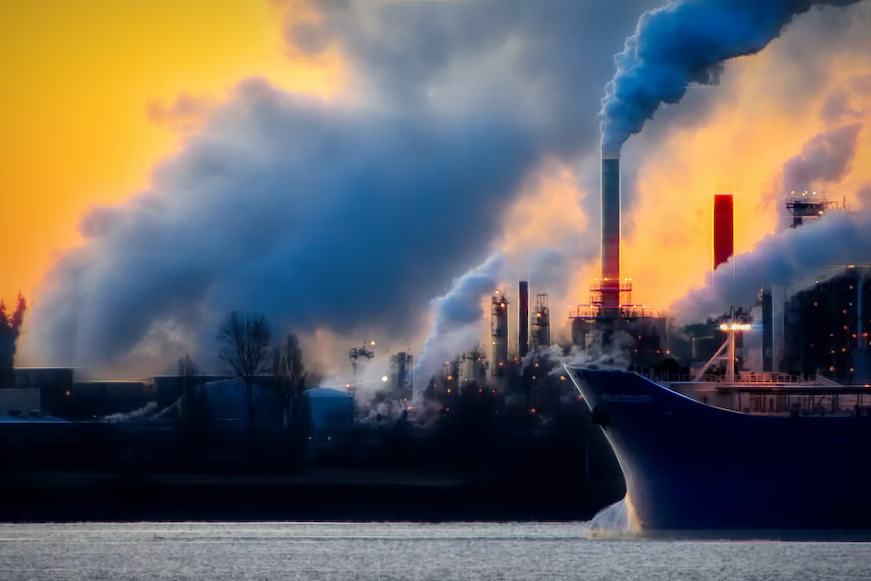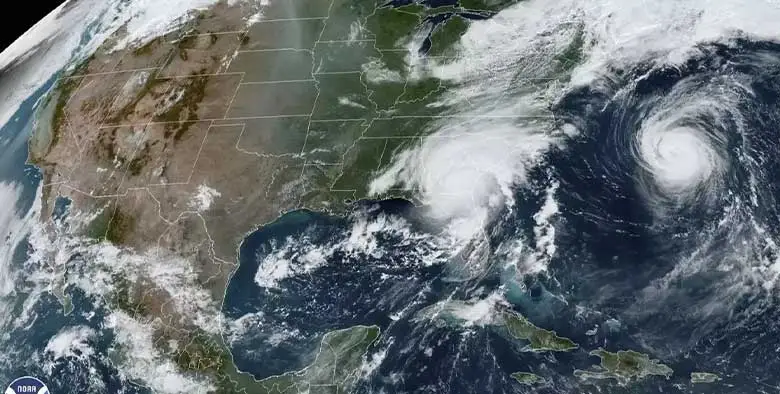- Know Everything About Nipah Virus, Which Is Back In Kerala Again
- Kevin Porter Jr Arrested On His Girlfriend’s Assault Charge
- Market Change Overnight - Know The 8 Things That Did It
- Who Are Alba Baptista And Chris Evans Married On The Weekend?
- Disrupted India vs Pakistan Asia Cup 2023 Match on Reserve Day
- 10 Common Foods That Contain No Calories or Are Very Low in Calories
- Men’s Styling Tips - Know the 9 Common Style Mistakes to Avoid
- Coco Gauff Beats Karoline Muchova and Reaches the US Open Final
- Danny Masterson Gets Life Sentence of 30 Years for Two Rapes
- Experience A Splendid Vacation in Kashmir with These 15 Gorgeous Sights
- India
- Sunday , May 05, 2024
- Last Published Sep 12, 2023, 6:48:32 PM

Emerging Contaminants in Water Supplies and the Ongoing Battle Against Them
Water is essential for life, and access to clean and safe water is a basic human right. However, the presence of emerging contaminants in water supplies poses a significant threat to public health and the environment. These elusive chemical pollutants have become a growing concern for water resource management.
According to a post by the Centers for Disease Control and Prevention, bacteria and pollutants can infiltrate drinking water at the source or in the distribution system after the water has been treated. Harmful bacteria and chemicals can enter the water from a variety of sources, including chemical discharge from industries and military bases, sewer overflow, agricultural activities, and so on.
In this article, we will explore the challenges associated with emerging contaminants and the strategies being employed to mitigate their impact.
Understanding Emerging Contaminants
Emerging contaminants are a diverse group of chemicals that are not commonly regulated or monitored in water supplies. These include pharmaceuticals, endocrine disruptors, pesticides, microplastics, and per- and polyfluoroalkyl substances (PFAS). Their presence in water sources can have adverse effects on human health and ecosystems, even at low concentrations.
Military Contamination of Water Resources
In addition to the challenges posed by emerging contaminants from industrial and consumer sources, military activities can also contribute to the contamination of water resources. Military installations, training grounds, and disposal sites can release a wide range of hazardous substances, including heavy metals, explosives, fuel hydrocarbons, and chemical warfare agents, into the surrounding environment.
The case of Camp Lejeune, a United States Marine Corps facility in North Carolina, is a notorious example of military pollution and its legal ramifications. For decades, a combination of volatile organic chemicals poisoned Camp Lejeune's drinking water supply. After studies regarding the contamination at the military installation were published, a number of victims filed a Camp Lejeune lawsuit against the U.S. military.
According to TorHoerman Law, the legal fallout from the Camp Lejeune contamination has been substantial. In 2012, the Honoring America's Veterans and Caring for Camp Lejeune Families Act was signed into law, providing medical care and support to those affected by the water contamination at Camp Lejeune.
Monitoring Strategies
Monitoring emerging contaminants in water supplies is a continuous process that involves sampling, analysis, and data interpretation. Traditional monitoring methods, such as grab sampling, are being complemented by automated sampling systems and remote sensing technologies to enhance spatial and temporal resolution. Additionally, the development of real-time monitoring devices allows for rapid detection and response to contamination events.
Detection Technologies
The detection of emerging contaminants requires advanced analytical techniques capable of identifying and quantifying trace amounts of these substances. Innovative methods such as liquid chromatography-mass spectrometry (LC-MS), gas chromatography-mass spectrometry (GC-MS), and high-resolution mass spectrometry (HRMS) have revolutionized the field by providing high sensitivity and selectivity.
An article published by Science Connected Magazine notes that researchers have recently demonstrated the potential of using E. coli for monitoring water quality and detecting heavy metal pollution. They cultivate the bacteria in varied concentrations of arsenic and chromium. The contents of the bacterial cells are then extracted and examined using surface-enhanced Raman spectroscopy (SERS). This technique shows promise for assessing water pollution and identifying heavy metal contamination.
Risk Assessment and Health Effects
Understanding the risks associated with emerging contaminants is crucial for effective regulation. Research efforts focus on evaluating the toxicity and exposure pathways of these pollutants to establish safe levels for human consumption. Health effects studies are essential to determine the long-term consequences of exposure and to guide appropriate regulations and treatment strategies.
Regulation and Policy
Regulating emerging contaminants presents a significant challenge due to their diverse nature and the constant emergence of new substances. Governments and regulatory agencies worldwide are working towards developing guidelines and setting maximum contaminant levels for these pollutants. Collaborative efforts between scientists, policymakers, and water utility providers are essential to implement effective regulations and ensure compliance.
Treatment Technologies
Removing emerging contaminants from water supplies requires innovative treatment technologies. Conventional water treatment methods, such as coagulation, filtration, and disinfection, may not be effective in removing these substances.
According to a report published in the National Academies Press, chemical clarification, granular media filtration, and chlorine treatment were basically the only treatment procedures utilized in municipal water treatment throughout the last 75 years. However, the water industry's strategy regarding water treatment has shifted dramatically during the past two decades.
Advanced treatment processes, including activated carbon adsorption, membrane filtration, and oxidation techniques, are being explored to address the specific challenges posed by emerging contaminants.
Final Thoughts
Emerging pollutants in water sources offer a substantial and growing threat to public health and the environment. Because of the diversity of these pollutants, as well as their potential for detrimental effects at low concentrations, proactive techniques for their identification, management, and treatment are required.
Monitoring technology and better analytical techniques have significantly improved our capacity to identify and quantify new contaminants, while risk assessment studies aid in determining their health impacts and establishing safe limits of exposure.
Effective regulations, collaborative efforts, and cutting-edge treatment technologies are critical in reducing the effect of these pollutants and ensuring everyone has access to clean and safe water.












